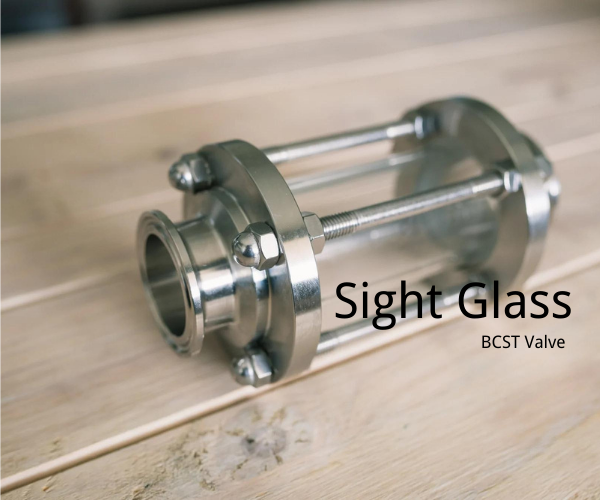
The sight glass is a device that displays the flow of fluids or gases in a pipeline or tank system. It can also access a closed pipeline and tank system to see what happens inside. Operators use sight glasses to view the contents of tanks and vessels without having to open them. Storage tanks can help check fuel oil or other chemicals. In addition to adding safety and ease of use, sight glasses can be made from various materials. If a sight glass becomes damaged or compromised, it can be replaced.
Sight glasses are standard components of thermodynamic expansion valve (TXV) metering systems. A sight glass is a device that allows technicians to view the condition of the refrigerant at the point where it is installed. Sight glasses protect the refrigeration system and provide an essential indication of any problem involving the system’s refrigerant, moisture, or contamination.
We can use the sight glass to observe the refrigerant level and detect the presence of moisture at the back end of the dry filter in the system. Immediately after the filter dryer, the liquid line usually contains a sight glass for systems with expansion valves. Nevertheless, the sight glass can be mounted anywhere along the discharge line in theory. But placing it close to the expansion valve is especially advisable as this will allow for more accurate readings and more efficient use of refrigerant.
The sight glass has a colour indicator in it to show the water content.
Green -There is no hazardous water vapor present in the refrigerant.
Yellow – Expansion valves have a high-water vapor content in their liquid lines.
UNDERSTANDING TXV
The TXV is a precision device designed to regulate the rate of liquid refrigerant entering an air conditioning system. This controlled flow is necessary to maximize efficiency and prevent excess liquid refrigerant from returning to the compressor (flood back).
One of the design features of the TXV is a separation between high-pressure and low-pressure sides of an air conditioning system. In addition, the TXV limits the amount of liquid refrigerant entering the evaporator, so the pressure of the liquid refrigerant entering the valve is reduced.
UNDERSTANDING THE FUNCTION OF THE TXV
The thermostatic expansion valve (TXV) is a device that controls the rate of flow of liquid refrigerant into an evaporator, but it’s not designed to control any other system variables. As a result, trying to use the TXV to control any of these system variables will lead to poor system performance – and possible compressor failure.
The TXV has been designed to control the rate at which liquid refrigerant enters the evaporator. It does this by opening or closing a valve when the pressure in the system increases or decreases rapidly. Therefore, the TXV does not control air temperature, head pressure, capacity, suction pressure, or humidity.
BEST LOCATION TO INSTALL THE SIGHT GLASS IN THE LIQUID LINE
The sight glass near the inlet of the TXV is ideal for charging a refrigerant line. To feed the right amount of refrigerant into the TXV, the refrigerant entering the TXV must be subcooled (no vapor). So we have sight glasses in this position to allow the technician to ensure that the refrigerant is subcooled before it enters the TXV. It is not the most convenient location since it will likely be a reasonable distance from either the condensing unit or the compressor, so in this position, using it as a loading aid would not be ideal. Because it will allow you to visually confirm a subcooled refrigerant is entering the TXV, I believe it is the preferred location.
You should install the sight glass after the filter/drier because it will be easier to determine if the filter/drier is restricting the refrigerant and sending a saturated refrigerant to the TXV. If there are no bubbles in the sight glass, there is no issue with refrigerant entering the TXV. However, if there are bubbles in the sight glass, there may be a problem with the filter/drier or other parts of your HVAC system.
The best way to ensure that the refrigerant is fed to the TXV at subcooled temperatures is to place a sight glass before the filter/drier. It will ensure that the refrigerant is being fed properly, and it will also be easier to see if any problems arise. However, if you want to ensure that your filter/drier is working correctly, I would then suggest placing a sight glass before it so that all components are in proper operation.
Manufacturers and equipment operators can choose from various BCST sizes and styles. However, using glass with the appropriate strength is critical to reducing the risk of breakage or cracking. Visit our site or call us at +8651783992209 to learn more about our sight glass flow indicators.






